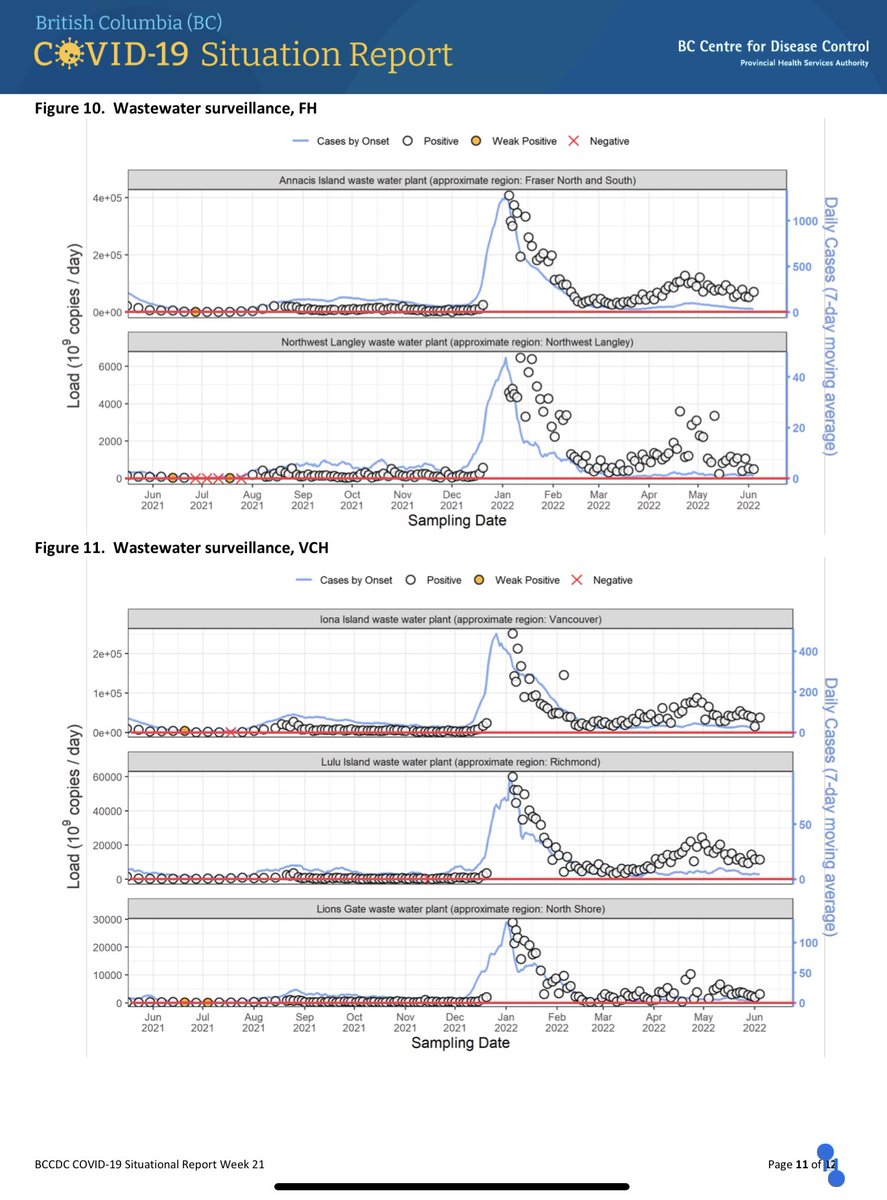COVID-in-wastewater for BC Lower Mainland, to 4-June-2022. 🪡
From bccdc.ca/Health-Info-Si…
Red line at zero level added to emphasize that relatively high levels persist in wastewater, discordant with the low level of officially reported cases. (1/n)
#covid19bc
From bccdc.ca/Health-Info-Si…
Red line at zero level added to emphasize that relatively high levels persist in wastewater, discordant with the low level of officially reported cases. (1/n)
#covid19bc

The graph is dominated by the Jan-Dec peak, which effectively and conveniently scales down the current persistent high levels. The eye tends not to catch that the levels post-peak are much higher than the levels before. (2/n) 

The description in the text seems determined to ignore these persistent high levels, and appears to focus on shorter-term bumps and noise in order to use the word “decreased”… (3/n) 

…which is unfortunate, because recent trends in hospitalizations and deaths make sense when one realizes that the wastewater data reveal a persistent high level of infection.
This high level of infection is not shown by the official case count… (4/n)
bccdc.ca/Health-Info-Si…
This high level of infection is not shown by the official case count… (4/n)
bccdc.ca/Health-Info-Si…

…the official case count that is based on limited and non-representative official PCR testing.
Official testing (MSP) is shown by the almost-illegible doted lines.
The solid lines are government + private PCR tests. (5/n)
bccdc.ca/Health-Info-Si…
Official testing (MSP) is shown by the almost-illegible doted lines.
The solid lines are government + private PCR tests. (5/n)
bccdc.ca/Health-Info-Si…

This matters because we cannot manage personal/societal risk and resources without clear and timely data on infections.
It would not be difficult or expensive to do ongoing PCR testing on a representative sample, using statistics to extrapolate to the population as a whole. (6/n)
It would not be difficult or expensive to do ongoing PCR testing on a representative sample, using statistics to extrapolate to the population as a whole. (6/n)
And yet, here we are.
(7/n)
(7/n)
A better COVID wastewater graph from the relentless robot @YVRCovidPlots 🤖should be available tomorrow.
@CDCofBC
@realreporter @MickSweetman @PennyDaflos
@GreaterfoolVan @SusanDavidsonM2 @crystalmundypsy
@biotimylated @COVIDPoops19
(8/n)
@CDCofBC
@realreporter @MickSweetman @PennyDaflos
@GreaterfoolVan @SusanDavidsonM2 @crystalmundypsy
@biotimylated @COVIDPoops19
(8/n)
• • •
Missing some Tweet in this thread? You can try to
force a refresh























